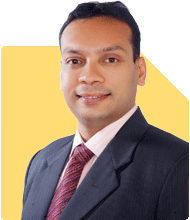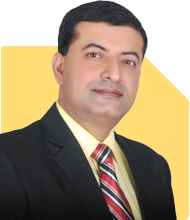Krishna Kumar |281 Answers |Ask -Follow
Workplace Expert - Answered on Feb 16, 2024
Before branching out on his own, he worked with companies like Microsoft, Rediff, Flipkart and InMobi.
With over 25 years of experience under his belt, KK is a regular speaker at industry events and academic intuitions, both in India as well as abroad.
KK completed his MBA in marketing from the Sri Sathya Sai Institute of Higher Learning in Andhra Pradesh and his management development programme from XLRI, Jamshedpur.
He has also completed his LLB from Nagpur University and diploma in PR from Bhavan’s College of Management, Nagpur, where he was awarded a gold medal.... more

Thanks for the suggestion I tried all possibilities, but in vain. I even tried thru Linkedin, no use.
Suggest you talk to some of your seniors and ex colleagues who know you, they can further guide you.
All the best.
You may like to see similar questions and answers below
Krishna Kumar |281 Answers |Ask -Follow
Workplace Expert - Answered on Feb 01, 2024
Shekhar Kumar |136 Answers |Ask -Follow
Leadership, HR Expert - Answered on Apr 26, 2024
Maxim Emmanuel |215 Answers |Ask -Follow
Soft Skills Trainer - Answered on Apr 30, 2024
Anu Krishna |874 Answers |Ask -Follow
Relationships Expert, Mind Coach - Answered on May 18, 2024
Ramalingam Kalirajan |2512 Answers |Ask -Follow
Mutual Funds, Financial Planning Expert - Answered on May 18, 2024
Ramalingam Kalirajan |2512 Answers |Ask -Follow
Mutual Funds, Financial Planning Expert - Answered on May 18, 2024
Ramalingam Kalirajan |2512 Answers |Ask -Follow
Mutual Funds, Financial Planning Expert - Answered on May 18, 2024
Ramalingam Kalirajan |2512 Answers |Ask -Follow
Mutual Funds, Financial Planning Expert - Answered on May 18, 2024
Ramalingam Kalirajan |2512 Answers |Ask -Follow
Mutual Funds, Financial Planning Expert - Answered on May 18, 2024
Ramalingam Kalirajan |2512 Answers |Ask -Follow
Mutual Funds, Financial Planning Expert - Answered on May 18, 2024
Ramalingam Kalirajan |2512 Answers |Ask -Follow
Mutual Funds, Financial Planning Expert - Answered on May 18, 2024
Ramalingam Kalirajan |2512 Answers |Ask -Follow
Mutual Funds, Financial Planning Expert - Answered on May 18, 2024
Ramalingam Kalirajan |2512 Answers |Ask -Follow
Mutual Funds, Financial Planning Expert - Answered on May 18, 2024

























